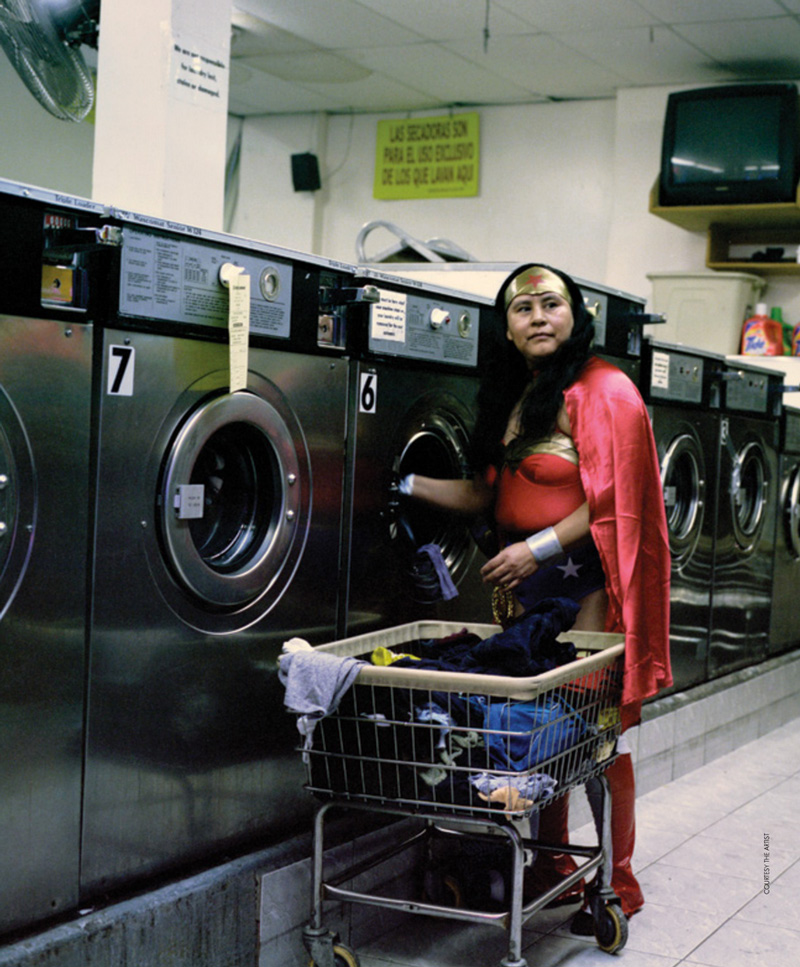Pow! Sok! She's Back
For artists, is Wonder Woman a corporate flack, a feminist icon —or a bit of both?
Between 1978 and 1979, Dara Birnbaum produced what was to become her signature video piece. Titled Technology/Transformation: Wonder Woman, it consists of a tightly edited seven-minute collage of scenes from the then-popular television series Wonder Woman.
The work focuses on the moments when Lynda Carter, the actress portraying Wonder Woman, effected her transformation from boring secretary Diana Prince into a buxom super heroine as she twirled into a blast of light. In short clips, the video presents the heroine running after criminals, repelling bullets, and rescuing a helpless man. Whereas today such samplings of found footage are commonplace, in 1979, when the work was completed, they represented a revolutionary approach to the television medium.

As Birnbaum observed in 2002, “It marks a moment in time when I felt I had to capture that idealized vision of a woman, with a perfect body, wrapped in the American flag. This was a horrendous image for me. In the year that I made the videotape, Wonder Woman bathing suits were the hottest-selling items for girls.” Linking her recollections to the politics of the early 2000s, she added, “If Bush has his own ‘axis of evil,’ then that image was mine.
. . . For me ‘the evil’ was and is the industry—an industry that men dominated, where they could form a commodified, corporate image of women.”
While for Birnbaum the television incarnation of Wonder Woman represented the mass media’s wholesale objectification of women, for others she was a formidable symbol of women’s strength. Only a few years earlier, Ms.magazine had paid homage to the original comic-book character by emblazoning her image on the cover of its 1972 inaugural issue, presenting Wonder Woman as a giantess batting off tank fire and exploding fighter jets as she strides down an urban street under the banner “Wonther Woman for President”.
. . . For me ‘the evil’ was and is the industry—an industry that men dominated, where they could form a commodified, corporate image of women.”
While for Birnbaum the television incarnation of Wonder Woman represented the mass media’s wholesale objectification of women, for others she was a formidable symbol of women’s strength. Only a few years earlier, Ms.magazine had paid homage to the original comic-book character by emblazoning her image on the cover of its 1972 inaugural issue, presenting Wonder Woman as a giantess batting off tank fire and exploding fighter jets as she strides down an urban street under the banner “Wonther Woman for President”.
Descarga el PDF completo aquí